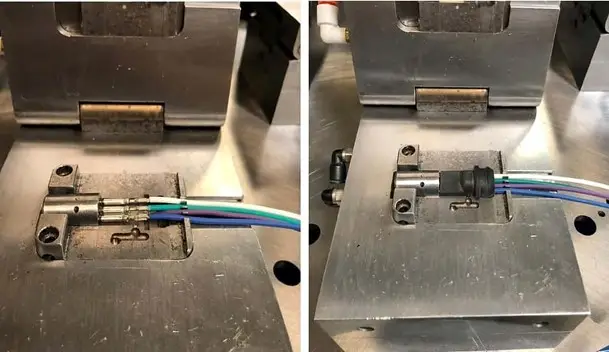Two-shot injection molding—also known as dual-shot, multi-shot, or 2K injection molding—is an advanced manufacturing process where two different materials or colors are injected into a single mold in two separate stages to create a single, cohesive part. This process enables the production of complex, multi-material components with enhanced functionality and aesthetics, without the need for secondary operations.
The Two-Shot Injection Molding Process
The process involves the following main steps:
First Shot (Primary Material Injection)
The base material (typically the more rigid plastic) is injected into the mold cavity to form the basic shape or substrate of the part. After cooling slightly, the part remains in the mold, held in place for the second shot.Second Shot (Secondary Material Injection)
The mold then rotates, slides, or repositions internally (depending on the machine design) to align the partially finished part with the second cavity. A second material—usually a softer, more flexible, or different colored plastic—is injected over or around the first shot to form the final component.Cooling and Ejection
Once the second material cools and bonds to the first, the completed part is ejected from the mold, fully formed with both materials securely attached.
Key Advantages
Improved Product Design: Allows for ergonomic designs with soft-touch surfaces, color contrasts, or integrated seals.
Stronger Bonding: Chemical or thermal bonding between materials enhances durability and performance.
Cost Efficiency: Reduces assembly steps and labor costs by combining materials in a single process.
Increased Functionality: Supports the integration of features like gaskets, grips, or windows without additional assembly.
Common Materials Used
Hard Substrates: ABS, PC, PA, PP
Soft Overmolds: TPE, TPU, Silicone
Combinations: PC + TPE, ABS + TPU, PA + Silicone
Applications of Two-Shot Injection Molding
Two-shot molding is widely used across various industries for both aesthetic and functional purposes:
1. Automotive
Soft-touch control buttons
Sealed connectors and gaskets
Multicolor interior panels
2. Consumer Electronics
Smartphone cases with integrated grips
Buttons and keypads with translucent or soft-touch features
3. Medical Devices
Ergonomic handles for surgical tools
Multi-material diagnostic devices
Color-coded parts for identification
4. Household Products
Toothbrushes (rigid handle with soft grip)
Kitchen tools and utensils
Power tool handles
5. Packaging
Dual-material caps and closures
Tamper-evident seals
Conclusion
Two-shot injection molding is a powerful process that combines design flexibility, aesthetic appeal, and manufacturing efficiency. As industries seek to innovate with multi-functional and user-friendly products, the demand for this technology continues to grow. Whether improving product performance or streamlining production, two-shot molding offers a versatile solution for modern manufacturing challenges.


